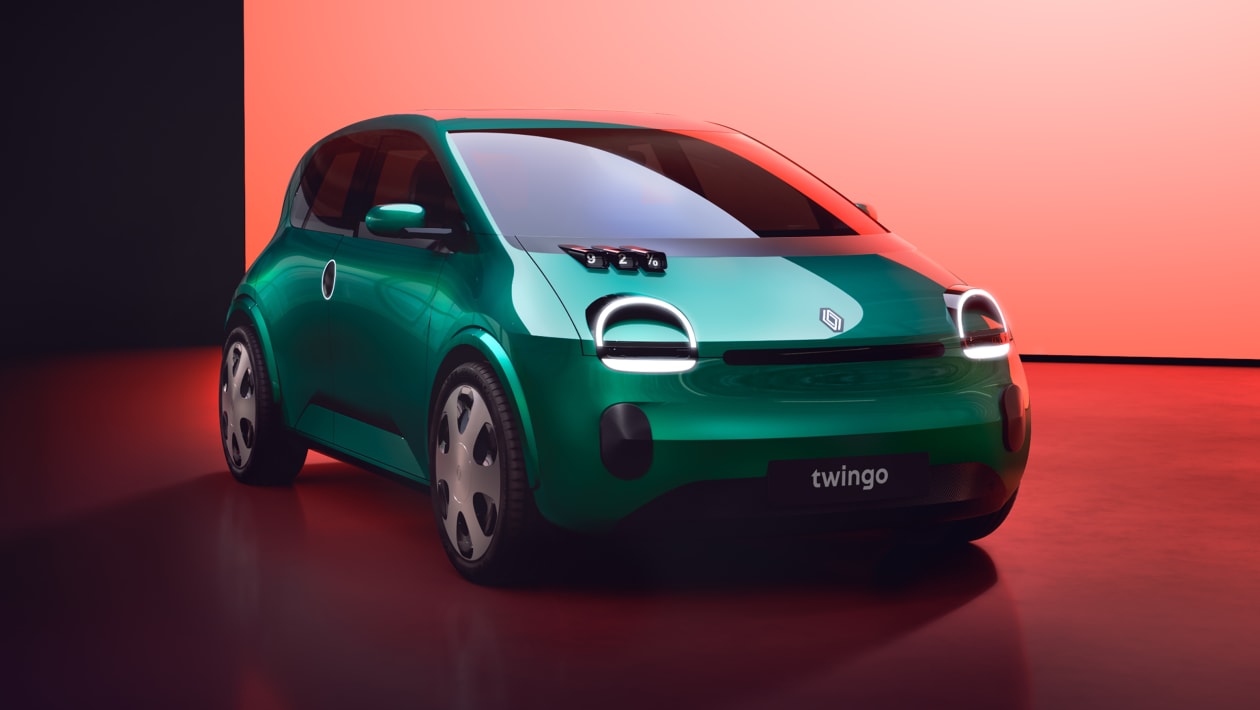Renault has unveiled a prototype of the next-generation Renault Twingo, set to hit the market in 2026. This city car is making a move into the electric vehicle (EV) market, a blend of retro design at an affordable price.

Also Read: 2025 Toyota Camry Unveiled: Exterior, Interior and Performance
Design
The prototype’s design is the original Renault Twingo, the charm of its headlight design. The shape pays homage to the first-gen Twingo, but with a modern twist.
The fascia is a reinterpretation of the original car’s design, with an offset triple vent opening on the hood that stands out, giving it a distinctive flair.
The exterior design retains the single-box shape reminiscent of the 1992 model but introduces modern touches like five doors instead of three.
The headlights and taillights are clear throwbacks to the original Twingo, maintaining a balance between retro aesthetics and styling. Even the hood vents make a return, now repurposed as battery charge level indicators.
Performance
While specific technical details are yet to be released, Renault promises efficiency for the new Renault Twingo, with a targeted energy consumption of 10 kilowatt-hours per 100 kilometers. If achieved, this would make the Twingo 50% more efficient than current small EVs.
Renault shows an incredible efficiency number of up to 6.2 miles per kilowatt-hour, making it the most efficient electric vehicle on sale in the U.S.
This surpasses the rear-wheel drive Ioniq 6, setting a new standard for electric vehicles in terms of energy efficiency.
Also Read: Ultraviolette F99 Electric Bike Unveiled at EICMA 2023
Production
The new Renault Twingo will use the “AmpR Small” modular architecture, underlining Renault’s commitment to electric mobility. Ampere, Renault Group’s small EV subdivision, will take charge of the design, engineering, and production of the Twingo.
The platform, which is also set to underpin the Renault 5 hatch and Renault 4 compact SUV, showcases Renault to a versatile and scalable electric vehicle architecture.
Pricing
Renault aims to make electric cars accessible to a big audience, and the new Renault Twingo exemplifies this commitment with a starting price “under €20,000” ($21,700).
This pricing positions the Renault Twingo as an entry into the electric vehicle market, offering an affordable option for consumers who might find most EVs currently on the market financially out of reach.
Renault’s CEO Luca de Meo describes the Twingo as “the European kei car,” addressing its an intelligent and purpose-built urban vehicle.
The pricing strategy and affordability of the Renault Twingo move by Renault, aiming to compete with Chinese rivals in terms of rapid development cycles and cost-effective electric vehicles.
Also Read: Tesla to Build 25,000-Euro Electric Car in Germany
EV Cars Market Competition
While the Renault Twingo is slated for the European market, its impact reverberates globally, setting for electric vehicles that blend style, efficiency, and affordability.
In the European A-segment, the Twingo will compete with electric competitors like the Volkswagen ID.1 and Citroën e-C3, creating competition in the electric vehicle market.
Renault’s positioning of the Twingo as a response to Chinese rivals underlines its ambition to prove that European automakers can match the speed of development seen in the highly competitive Chinese EV market.
The Renault Twingo is not just a car; it represents an opportunity for Renault to assert itself in the evolving market of electric mobility.
The Twingo aims to be 50 percent more efficient than current small EVs, with an energy consumption of 10 kilowatt-hours per 100 kilometers.
This milestone aligns with Renault’s goal of reducing CO2 emissions, as the Twingo is projected to emit 75 percent less CO2 over its lifecycle compared to the average European internal combustion engine (ICE) car in 2023.
Renault’s EV Lineup
Ampere’s role extends beyond the Renault Twingo, contributing to Renault’s plan of a seven-strong European electric car lineup by 2031.
The AmpR Small platform, shared with the Renault 5 and Renault 4 electric subcompacts, represents a component of Renault’s strategy to offer a range of EVs.
With plans to achieve EV/ICE price parity by 2027-2028, Ampere envisions growth, aiming to sell around 300,000 EVs per year by 2025 and reaching one million in 2031.
Also Read: Limited-Series Ferrari 499P Modificata Unveiled at Ferrari World Finals






















